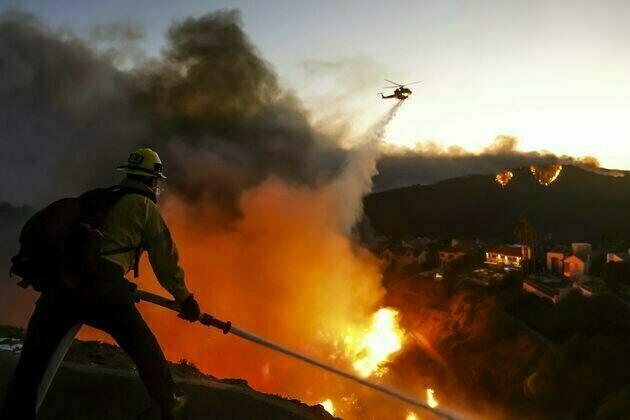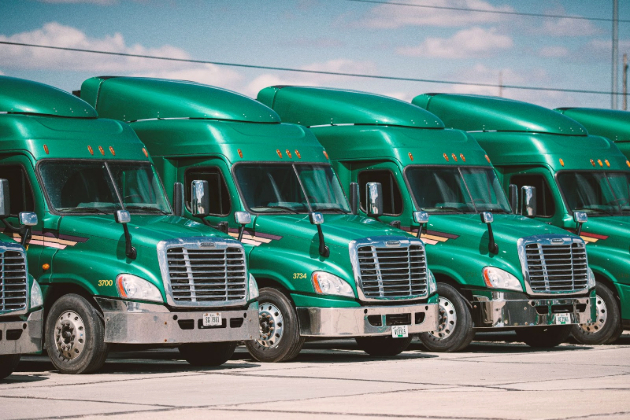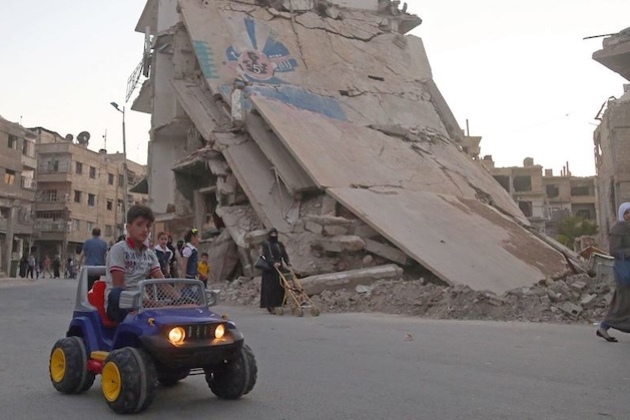Australia and North America have long fought fires together - but new research reveals that has to change
The Conversation
06 May 2025, 02:31 GMT+10

Climate change is lengthening fire seasons across much of the world. This means the potential for wildfires at any time of the year, in both hemispheres, is increasing.
That poses a problem. Australia regularly shares firefighting resources with the United States and Canada. But these agreements rest on the principle that when North America needs these personnel and aircraft, Australia doesn't, and vice versa. Climate change means this assumption no longer holds.
The devastating Los Angeles wildfires in January, the United States winter, show how this principle is being tested. The US reportedly declined Australia's public offer of assistance because Australia was in the midst of its traditional summer fire season. Instead, the US sought help from Canada and Mexico.
But to what extent do fire seasons in Australia and North America actually overlap? Our new research examined this question. We found an alarming increase in the overlap of the fire seasons, suggesting both regions must invest far more in their own permanent firefighting capacity.
We investigated fire weather seasons - that is, the times of the year when atmospheric conditions such as temperature, humidity, rainfall and wind speed are conducive to fire.
The central question we asked was: how many days each year do fire weather seasons in Australia and North America overlap?
To determine this, we calculated the length of the fire weather seasons in the two regions in each year, and the number of days when the seasons occur at the same time. We then analysed reconstructed historical weather data to assess fire-season overlap for the past 45 years. We also analysed climate model data to assess changes out to the end of this century.
And the result? On average, fire weather occurs in both regions simultaneously for about seven weeks each year. The greatest risk of overlap occurs in the Australian spring - when Australia's season is beginning and North America's is ending.
The overlap has increased by an average of about one day per year since 1979. This might not sound like much. But it translates to nearly a month of extra overlap compared to the 1980s and 1990s.
The increase is driven by eastern Australia, where the fire weather season has lengthened at nearly twice the rate of western North America. More research is needed to determine why this is happening.
Alarmingly, as climate change worsens and the atmosphere dries and heats, the overlap is projected to increase.
The extent of the overlap varied depending on which of the four climate models we used. Assuming an emissions scenario where global greenhouse gas emissions begin to stabilise, the models projected an increase in the overlap of between four and 29 days a year.
What's behind these differences? We think it's rainfall. The models project quite different rainfall trends over Australia. Those projecting a dry future also project large increases in overlapping fire weather. What happens to ours and North America's rainfall in the future will have a large bearing on how fire seasons might change.
While climate change will dominate the trend towards longer overlapping fire seasons, El Nino and La Nina may also play a role.
These climate drivers involve fluctuations every few years in sea surface temperature and air pressure in part of the Pacific Ocean. An El Nino event is associated with a higher risk of fire in Australia. A La Nina makes longer fire weather seasons more likely in North America.
There's another complication. When an El Nino occurs in the Central Pacific region, this increases the chance of overlap in fire seasons of North America and Australia. We think that's because this type of El Nino is especially associated with dry conditions in Australia's southeast, which can fuel fires.
But how El Nino and La Nina will affect fire weather in future is unclear. What's abundantly clear is that global warming will lead to more overlap in fire seasons between Australia and North America - and changes in Australia's climate are largely driving this trend.
Firefighters and their aircraft are likely to keep crossing the Pacific during fire emergencies.
But it's not difficult to imagine, for example, simultaneous fires occurring in multiple Australian states during spring, before any scheduled arrival of aircraft from the US or Canada. If North America is experiencing late fires that year and cannot spare resources, Australia's capabilities may be exceeded.
Likewise, even though California has the largest civil aerial firefighting fleet in the world, the recent Los Angeles fires highlighted its reliance on leased equipment.
Fire agencies are becoming increasingly aware of this clash. And a royal commission after the 2019-20 Black Summer fires recommended Australia develop its own fleet of firefighting aircraft.
Long, severe fire seasons such as Black Summer prompted an expansion of Australia's permanent aerial firefighting fleet, but more is needed.
As climate change accelerates, proactive fire management, such as prescribed burning, is also important to reduce the risk of uncontrolled fire outbreaks.
 Share
Share
 Tweet
Tweet
 Share
Share
 Flip
Flip
 Email
Email
Watch latest videos
Subscribe and Follow
Get a daily dose of Brisbane Star news through our daily email, its complimentary and keeps you fully up to date with world and business news as well.
News RELEASES
Publish news of your business, community or sports group, personnel appointments, major event and more by submitting a news release to Brisbane Star.
More InformationAustralia
SectionAustralian police and partners smashing drug cartels
Every day, police across Australia investigate thousands of incidents—any one of which could unlock a major case on the other side...
Australia inflation hits 3-year low, boosting rate cut hopes
SYDNEY, Australia: A key measure of inflation in Australia has cooled to its lowest level in three years, lending weight to expectations...
Anthony Albanese returned as Australian prime minister
SYDNEY, NSW, Australia - The Australian Labor Party has been swept to victory for a second term after defeating the Coalition in an...
Regions want gritty news that matters not 'anaemic' local coverage
Regional audiences still want trusted local coverage that seeks accountability on issues that matter, but there are news outlets failing...
Bad Bunny announces global tour: Concerts to be held in Japan, Brazil and more
Washington DC [US], May 6 (ANI): After wrapping a 30-date residency in his home island of Puerto Rico on September 14, the reggaeton...
Australia and North America have long fought fires together - but new research reveals that has to change
Climate change is lengthening fire seasons across much of the world. This means the potential for wildfires at any time of the year,...
International
SectionHHS Secretary RFK Jr. plans overhaul of vaccine testing, report says
WASHINGTON, D.C.: U.S. Health and Human Services Secretary Robert F. Kennedy Jr. wants to change how vaccines are tested, according...
US House votes to block California’s zero-emission truck plan
WASHINGTON, D.C.: In a challenge to California's push for cleaner transportation, the U.S. House of Representatives voted this week...
Two measles cases confirmed in Cook County
CHICAGO, Illinois: The Chicago and Cook County health departments say that two people in Cook County have measles. These are the...
EPA to cancel 800 grants, including all for environmental justice
WASHINGTON, D.C.: The Trump administration through U.S. Environmental Protection Agency (EPA) is canceling nearly 800 grants, including...
Forced disappearances continue to haunt Syrian families
I will never forget that fateful moment when I was just 11 years old, walking back home from school with my friend. Unfortunately,...
Anthony Albanese returned as Australian prime minister
SYDNEY, NSW, Australia - The Australian Labor Party has been swept to victory for a second term after defeating the Coalition in an...










